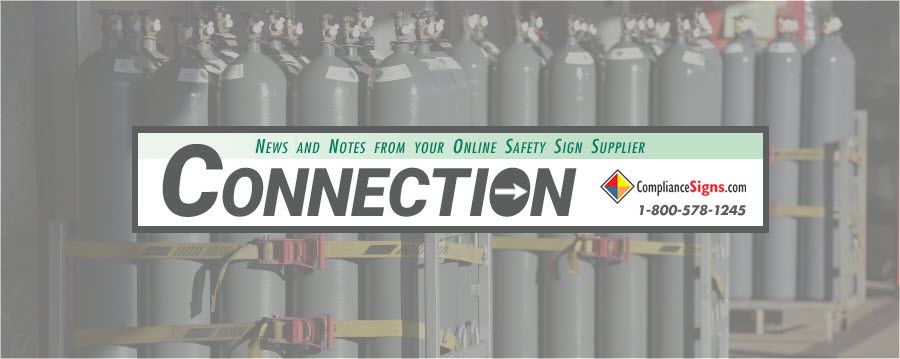
Top 10 Workplace Safety Articles of 2018

These 10 occupational health and safety articles from our Connection newsletters generated a lot of interest in 2018. We do our best to keep you up-to-date on new rules, tools and tips that can help keep your workplace safe and in compliance. All these posts are worth a second look as you plan for a safe workplace in 2019.
Beginning August 30, 2018, California required updated Proposition 65 labels and signs. Under Prop 65, companies doing business or selling products in California are required to provide “clear and reasonable” warnings before knowingly exposing Californians to more than 800 chemicals the state has identified as hazardous. Most signs now require a WARNING symbol (triangle with exclamation point) along with the word “WARNING” and an associated Prop 65 website address. In addition, updated Prop 65 signs will require specific chemical names and, in some cases, sources of exposure. Current signs don’t include the warning heading and symbol, and don’t require specific chemical or exposure information.
The National Safety Council and the Network of Employers for Traffic Safety (NETS) invite employers to participate in Distracted Driving Awareness Month in April. Both groups are offering free employer resources, including posters, fact sheets, infographics, social media posts and more. Sharing this key information with your employers will help protect your workforce – and your business.
Falls from ladders are preventable, yet they account for 300 deaths and some 20,000 injuries each year. The American Ladder Institute (ALI) has announced March as National Ladder Safety Month, designed to raise awareness of ladder safety and to decrease the number of ladder-related injuries and fatalities.
A total of 5,190 fatal work injuries were recorded in the US in 2016, a 7-percent increase from the 4,836 reported in 2015, the U.S. Bureau of Labor Statistics reported this week. This is the third consecutive increase in annual workplace fatalities and the first time more than 5,000 fatalities have been recorded by the Census of Fatal Occupational Injuries (CFOI) since 2008.
Foot injuries are among the most common workers’ compensation injuries, including breaks, fractures and heel injuries. A study of over 250,000 worker’s comp claims found the average final settlement for a foot injury is more than $17,000. Prevention of workplace foot injuries makes good sense for workers and employers. But safety shoes and foot PPE reminder signs aren’t enough. This article will explain the causes, costs and prevention steps you can take to reduce foot injuries in your workplace.
The top 10 OSHA violations of the year were announced at the National Safety Council Congress and Expo. This list typically changes very little from year to year, and 2018 has been no exception. Fall Protection – Training Requirements and Machine Guarding swapped spots at number 8 and 9 compared to the 2017 list. The lone newcomer this year is #10, Personal Protective and Lifesaving Equipment – Eye and Face Protection, with 1,536 violations. It bumped last year’s #10, Electrical – Wiring Methods, off the list.
Emergencies and disasters can strike anywhere at any time, bringing workplace injuries and illnesses with them. Employers and workers may be required to deal with an emergency when it is least expected. Yet a recent survey found less than 25 percent of office workers feel prepared for basic emergency procedures.
Many workers spend 7 or more hours a day using computers and, according to a State University of New York Study, many individuals spend more than 10 hours per day viewing electronic displays, frequently without adequate breaks. And the more they focus their eyes on computers and electronic devices, the more strain their eyes endure. Check this article to help prevent CVS in your workplace.
In an effort to improve forklift safety across the country, members of the Industrial Truck Association (ITA) sponsored the fifth annual National Forklift Safety Day on June 12 in Washington, D.C. The annual event provides an opportunity for the industry to educate the public, policymakers and government officials about the safe use of forklifts and the importance of proper operator training. Forklift operator training can improve operator performance scores 61 percent, according to OSHA.

